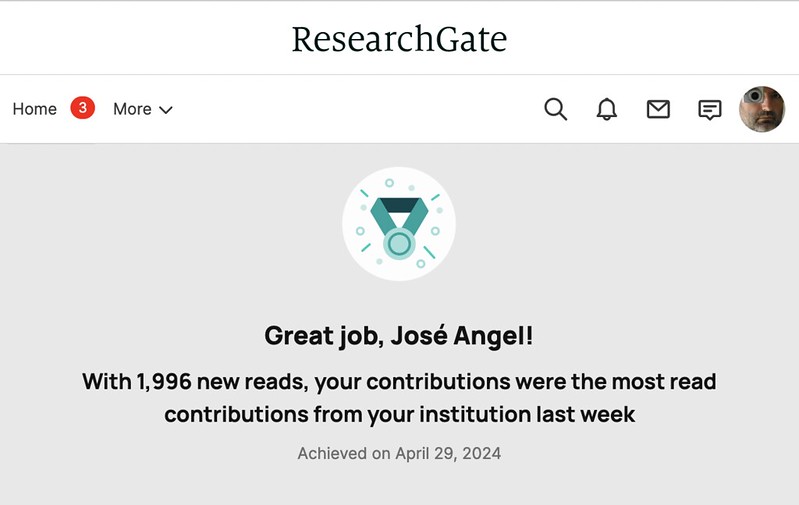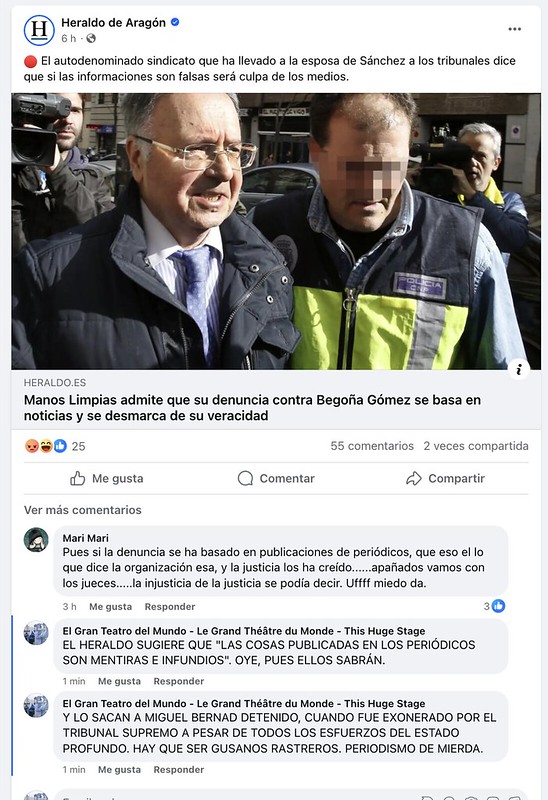Notes from
Michael
Hoey, Textual Interaction
José Angel García Landa
Universidad de Zaragoa, 2003
With occasional parenthetical comments in Spanish....
1.
What to expect and what not to expect
5 Reader’s
expectations- “The point is that you will have interacted with the passage. One of the aims of this book is to
show the linguistic implications of the fundamental fact that texts gain their
meaning from a reader’s interaction with them.” Writers presume a shared
understanding of what texts do, “This shared understanding is another feature
of interactivity and is, more than anything else, the subject of this book.”
10 Kaplan
1966, different cultures have different preferences for sequencing an argument.
Griems 1972, 1975: “distinguishes outline and overlay languages (the former
moving quickly from narrative point to point, the latter building the narrative
by a process of accretion involving considerable repetition and paraphrase”
2
Text as a site for interaction
11 “Texts
can be defined as the visible evidence of a reasonably self-contained
purposeful interaction between one or more writers and one or more readers, in
which the writer(s) control the interaction and produce most of
(characteristically all) the language.”
13 Model
of interaction in fiction “is very limiting if one looks at a wider range of
texts. In the first place it treats writing as a proactive process and reading
as a receptive process”
14 “It
can be useful to see texts as the product of an interaction not between two
participants but amongst four: the author, the writer, the audience and the
reader.”
“The audience of a text is the intended
readership, the imaginary person or persons whom the writer addresses and whose
questions s/he tries to answer.”
15 “Morley
(1998) has shown how this use of nominal groups to compress known or
assumed-to-be-known information is used by newspapers to encode
ideologically-loaded positions”
Purposes of the interactions amongst
author, writer, audience and reader. “The interactions amongst author, writer,
audience and reader are complex. The author has a purpose in communicating to
the audience and authorises the writer to produce a text that will achieve that
purpose. The writer composes a text for an audience that may or may not match
the description of the actual readers. The readers also have a purpose in
reading the text which may not be the one that the writer had in mind and may
not be congruent with the author’s original purpose.”
E.g. RAC advertisement: author, RAC,
writer, copywriter.
16 A reader
chances upon the text; I don’t have a car “So I am the ‘wrong’ reader; I am a
reader, for all that.”
Reading a statute: if a lawyer reads,
“Such a reader’s interpretation may not always be a co-operative one”
“Natural science articles are different
from advertisements and statutes in having personal authors.”
“The audience is made up of fellow
scientists with a specialist knowledge in the field, as again a glance at the
nominal groups reveals. As with the statue, there is little chance that the
actual readers will differ much from the ideal reader that the writer had in
mind.”
17 Newspaper
stories: authro is the newspaper. Audience of political news is expected to
have been following the story, know main participants, etc.
“Sometimes there is more than on audience intended for a text” e.g.
till receipt contains information for a variety of audiences.
18 The
Writer’s Desire to meet the audience’s needs: And the author’s, if not the same
(Cf Goffman: principal, speaker...).
20 “First,
texts are indeed the product of an interaction between their author and their
audience, and second, adults manage the interaction diffrerently”
23 Sentences
give rise to sets of expectations by readers, met or not (cf. Eco & me).
“on the basis of reading a sentence, a
reader forms expectations about how the text may continue. S/he then matches
those expectations against the next sentence. If this sentence appears to match
one of his/her expectations more than any of the others, it will be interpreted
in that light.”
24 “our
understanding of texts is partly governed by our ability to generate sensible
hypotheses about what is going to happen in the text that we are reading and by
the attempts we make to find those hypotheses fulfilled”
25 “Narrative
texts are much the same with regard to the matter of answering the reader’s
questions except that, in principle, they are easier to process.”
26 “As
a general truth, text is not built up with sentences as building blocks:
sometimes, the building blocks of text are smaller (as here), sometimes much
larger...”
27 Signals
from writer to reader: moment-by-moment guidance:
e.g. “the former” as a signal that “the
latter” will follow, nominal group constructions to create expectations, or
disambiguation, etc. “Signals at the level of text are of a different kind.
They vary in nature and will be discussed in more detail in later chapters. For
the moment, I note only that they may take the form of specialised nouns (e.g. consequence), verbs (e.g. differs), adjectives (contrasting) and adverbs and
prepositional phrases (e.g. therefore, as
a result), the last being enshrined in grammars as ‘conjuncts’ or ‘sentence
conjunctions’.”
28
Signalling may include signals of what questions have been answered
(retrospective signalling).
30 Clause
relations as a reflection of a text’s interactivity:
“the signals writers use are a way of
reducint the amount of inference necessary in any particular case.”
“Signals sometimes eleiminate the need
ffor such inferences, but few texts do not require some inferencing on the part
of readers.” Winter, 2 kinds of relations between clauses or sentences,
“Sequence relations and Matching relations” (time sequence, cause-consequence,
means-purpose, premise-deduction are sequence relations).
31 “Matching
relations, by contrast, do not involve putting things in any order: instead
statements are brought together with a view to seeing what light they shed on
each other” (comparison, difference, exemplification, preview-detail,
exceptions. May be signalled by subordinators and sentence conjunctions, often
by repetition and parallelism).
32 Implications
for learner: accurate recognition of signals may ease processing.
33 proponents
of interaction: Goodman, Smith 1978, Goffman, Winter.
3
Interaction in text: The larger perspective
35 “At
the same time that we formulate expectations about the immediately unfolding
text, so also we formulate larger-scale hypotheses about the text as a whole,
and the text will be written with these larger hypotheses in mind as well as
the local ones that could be modelled in terms of a question-answer dialogue.”
Questions that receive a deferred answer.
41 Cohesion
features, etc. “they are part of the signalling that a writer, consciously or
unconsciously, supplies to enable a reader to detect places where expectations
are to be met—or at the very least connections to be made.” Cohesive ties:
“their real significance lies in their availability as means for connecting
sentences, both close to and far off.”
42 Successful
predictions of most general features of a text on the basis of few sentences,
etc.
43 “a
measure of the writer’s own successs at predicting what his readers will want
to know.”
An article in embryo at its beginning.
Signals as messages from writer to
reader: previews and intertextuality—
“The writer knows that readers will
expect certain things on the basis of previous texts of the same kind that they
have to read and so takes the trouble to conform to those expectations”
etc.; “preview statements that function
as signals to the reader about the nature of the text to come”
e.g Borges’s “Death and the Compass”
begins with allusions to detective stories.
46 “Borges
is exploiting the genre conventions to make the reader believe s/he is reading
an olf-fashioned detective story, but it is only a detective story in a rather
indirect and unusual way.”
48-49 Fowles’s The Enigma: “The startling effect of the change of direction Fowles
introduces into his story would not be startling at all if our expectations of
texts were not normally met. Writers anticipate our needs by presenting
information in the order we need it and in which we have received it in the
past and we in turn have expectations that are
shaped by our confidence that the writer will anticipate our needs”
49 Implications
for the language learner. Cohesion-seeking exercises, etc.
50 “a
learner will find it easier to make sense of a text if the intertextual
connections are recognised.”
51 “it
is not necessary to argue that cohesion creates coherence; it is sufficient to
note that the coherence of a text is reflected in and is signalled by the
cohesion in the text.”
“Schema theory can also be seen as a
theory of intertextuality.”
4
The hierarchical organisation of texts
53 “the
writer has to anticipate the reader’s needs both locally and globally” à hierarchy.
Simple hierarchies. Determination of
constants and variables as sentences are added. Relationships of contrast,
sequence, similarity, among groups of sentences. Matching relations and sequence
relations.
61 “patterns
of text organisation are grounded in the detail of the text. Discourse
description that does not engage with this detail is not truly linguistics—it
may be literary, semiotic or rhetorical and have a value in such terms, but the
linguistic description of text/discourse, as well as developing its own
categories, must also engage with the categories of other levels of linguistic
description.”
Hierarchical sections of texts, etc. (Literary criticism is light years ahead of
this… JAGL).
66 “there
are relationships across blocks of sentences that no neat hierarchical diagram
can do justice to.”
69 “What
Borges has in effect done is to force readers to question the pattern-making
skills they use in making sense of narrative.”
70 Some
text linguists forcing text into the hierarchical structures, etc. “Shepherd (1988) shows that that one of
the less obvious characteristics of narrative is that they make extensive use
of repetition-signalled matching: this claim is supported in part by the
narrative analyses in this chapter.” (Cohesion).
5 The organisation of some ‘Cinderella’ texts
72 “The
preference of grammarians for fictional narrative as a model for introspected
data was no more than a natural consequence of their confident literacy...”
“Text analysts have developed
descriptions designed to account for the interconnectedness of argumentative
and narrative prose, without acknowldedging the fact that not all texts take
the form of continuous prose composed of complete sentences semantically
related in respects of their lexis and the propositions they articulate.” (Cf. Goffman, la coherencia la da un contexto
que no es lingüístico).
73 “the
Cinderella texts that get neglected in most text theories” “a relatively
homogeneous class” (????). “They are
homogeneous in respect of their discourse characteristics but highly
heterogeneous in respect of their appearance and use—the class covers a wide
range of types of text from shopping lists to statutes, bibliographies to
Bibles.”
74 The
statute: no lexical coherence necessarily, etc. (What of pragmatic coherence?)
The text as ‘colony’.
(Confunde
los parámetros de descripción debidos a la disciplinariedad como si proviniesen
del objeto descrito).
75 “the
criminal statue and other such texts might be characterised as colonies”
“a
colony is a discourse whose component parts do not derive their meaning from
the sequence in which they are placed” (Reference
books, etc. —pero si no estan ordenados no
existe la colonia???? JAGL. Problema de relación utilidad / significado en esta
definición).
76 “ a colony may be embedded inside
another colony and in so doing a hierearchical organisation is normally
created. Thus a newspaper is a colony whose component parts are themselves
colonies”
79 “the
framing context of a colony is usually essential for its interpretation in a
way that is not normally the case for ‘mainstream’ texts”
Title protocols, etc.
81 “In
marked contrast the parts of a scientific paper relate to each other
independently of the influence of the title”.
Colonies may have multiple authors not
responsible for the whole. Editors not the authors of every component.
Matching relations and sequence relations
structure mainstream texts, colonies structured otherwise even if sections may
have that structure.
Numerical ordering (no es simplemente numérico: pragmático, etc.)
87 “Numerical
and temporal ordering can in many cases be regarded as functioning somewhat
like conjunctions, some of which are used to signal sequence.” Only cohesive
because author and reader connive at making them so.
89 The
way colonies are read. “Reading can take several forms, and texts have
developed in response to these forms.” Scanning looking for information:
“Colonies ... have largely arisen in response to this reading strategy: they
are organised so as to allow the reader to select what he or she needs.
Interestingly the colony organisation of statutes would appear also to be a way
of inhibiting uncooperative readings (Hoey 1985 a).
90 “'Mainstream'
texts may likewise be read as if they were colonies” Colony-like elements in
mainstream texts. Indexes, etc.
Implications for the language learner.
Vs. reading as a single skill and linear processing.
91 “From
the point of view of teaching academic reading, perhaps the most important
implication of the ‘colony’ analysis is that academic textbooks have many of
the features of a colony.” Vs. prejudice of complete reading as only way of
reading. Libraries and computer folders as further colonies.
92
“the boundaries of our units should not be protected like barricades”
“Our discourse boundaries are the product of our theories, not the raw data to
be accounted for”
White: ‘solar system’ model for news
stories around initial statement.
6 A Matrix perspective on text
93 Pike
1981 “Kenneth Pike seeks to distinguish between the structure of a happening
and the structure of a telling of that happening. He argues that if we could
find a way of describing the structure of a happening separately from its
telling, then we might have a way of comparing the kinds of telling that people
could use to report the happening.” (Esto
es delirantemente pre-teórico).
Structure of event from the point of view of each of
the persons involved, time bands and the narrative’s route through the matrix of
each participant, omitting cells, changing order, etc.
99 (Meditaciones sobre qué es story y que es
happening, pero son self-defeating, presupone un contexto único que da la
realidad de los hechos.. )
100 “Notice
that this allows us to compare alternative tellings and to compre the telling
we have with the tellings we might have had. If we have alternative tellings,
they are presumably mappable onto the same matrix” (Ignora su posicion metalingüística).
The variable precision of matrixes
(Goldilocks and the Three Bears, matrix analysis).
102 (Todo esto sin referencia al trabajo de los
narratólogos).
105 A
matrix perspective on Death and the
Compass. “The relationship between genre and path through the matrix exists
for literary genres as well as non-literary ones”
Alternative matrix analyses, sequence or
comparison-based, etc.
115 “The
matrix brings certain features of the text to light that might otherwise be
overlooked. These might be described as the exposure of false symmetry, on the
one hand, and the highlighting of true symmetry on the other” (O crea prioridades mecánicas).
118 “If
a telling seems not to work in the judgement of readers, the explanation may
lie in an inconsistent perspective, which can be identified readily by means of
a matrix” (pss.).
7 Culturally popular patterns of text
organisation
119 Another
interaction stragegy may be adopted by writers:
“The third strategy that a writer can
adopt, however, is to answer an agreed sequence of questions, to operate in
effect with a template of questions that both writer and reader know about and
can refer to.”
Schemata and scripts (and genre?) Cultural presuppositions
spelled out, etc.
120 “It
is important to note, though, that other interpretations of the text are
possible: the words do not have to
have the meaning that reader and writer co-operate in making.” (atypical contexts, etc.)
121 “A
schema represents the (non-narrative) connections between facts; a script
represents the sequence in which likely events will occur.”
122 “readers
seem to bring two kinds of knowledge to bear on the texts they read—the
specific knowledge described by schemata and scripts and a more generalised
sets of expectations that are shared across a range of texts” — “culturally
popular patterns of organisation”
123 Problem-solution
pattern, the most common of all.
Signals of evaluation point to problem,
e.g. “illiteracy”
128 Two advertisements displaying
problem-solution patterning. “It is important in any analysis to identify the
signals that trigger recognition of the pattern and subsequently confirm its
existence, since they are a direct linguistic reflection of the pattern.”
“The greater the knowledge the reader
shares with the writer, the less need there is for the writer to make explicit
linguistic reference to the pattern being followed, since the significance of
the information being provided will be quite obvious to the reader”
130 Recognising
writer’s patterns and signals “does not prevent me reflecting critically upon
the value systems that the writer has chosen to encode”
Recycling in Problem-Solution patterns.
(Negative evaluation leads to further response, until a solution is reached).
139 Interlocking problem-solution
patterns (problem for one character is solution for another. etc).
8 Other culturally popular patterns
Problem-Solution is the more basic.
Limitations: other types of pattern needed to account for textual structure.
145 Goal-Achievement
pattern.
148 “one text may represent the
interleaving of different patterns”
150 Opportunity-taking pattern.
155 Desire
Arousal-Fulfilment pattern.
161 Gap-in-Knowledge-Filling
pattern. (No Bremond anywhere here).
Used in narratives as well as scientific
or academic writing.
164 “In
Death and the Compass Borges uses
three of the patterns we have been considering in this chapter: the Gap in
Knowledge-Filling pattern, the Goal-Achievement pattern, and the
Opportunity-Taking pattern.”
165 “The
word mystery confirms the pattern,
and solving shows that the Gap is
being filled”
“I argued that the differences amongst
alternative tellings of the same ‘happening’ were so considerable that it makes
no sense to talk of them all sharing the same story”.
166 “Depending
on which pattern we attend to, the story looks different.”
“Borges reminds us that text is the site
of an unreliable and variable interaction between reader and writer and it is
to that textual interaction that we again turn in the final chapter of this
book, looking at two patterns that seek to replicate the interactivity of
face-to-face talk”
167 “One
of the defects of statistical measures of readability is that they compute
difficulty in terms of sentence length and word length but cannot take account
of the possible presence or absence of shared schemata/scripts.”
SPRE patterns as ready-made templates, an
orientation for learning writers.
168 “A
good writer does not use signals heavily but does give clear indications of the
different stages of the pattern to his or her readers. The signalling
vocabulary is valuable vocabulary and deserves to be given some priority in
language teaching”
9 When the pattern turns into a dialogue
170 “all
the patterns are brought to a conclusion or else re-activated by a Positive or
Negative Evaluation and/or Result”... “all the patterns are characteristically
signalled either by inscribed or evoking lexical choices”
Question-Answer Pattern. Questions,
answers, rejected, basis for rejection, answer, etc.
178 “under
some circumstances, the Question can be omitted.”
(Problem cannot be omitted).
184 a
cline of patterns from Problem-Response to Question-Answer.
“text is the site of an interaction
between writer and reader. The Question-Answer and Claim-Denial/Affirmation
patterns seem to point to a further form of textual interaction, that between
the author and someone other than the reader.”
187 “I
am claiming in fact that all the patterning we have been considering in this
and the last two chapters may be seen as a record of, and derivative from, the
structures found in spoken discourse and social behaviour”
This book is just a preliminary study, etc.
“I have initiated: I leave it to you to respond.”
—oOo—












